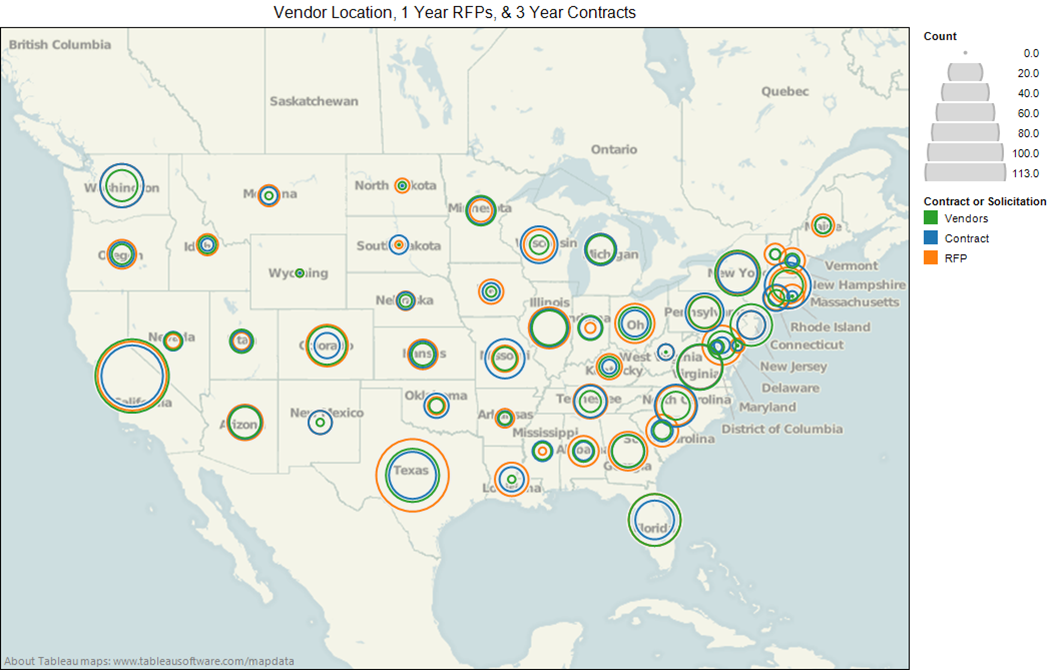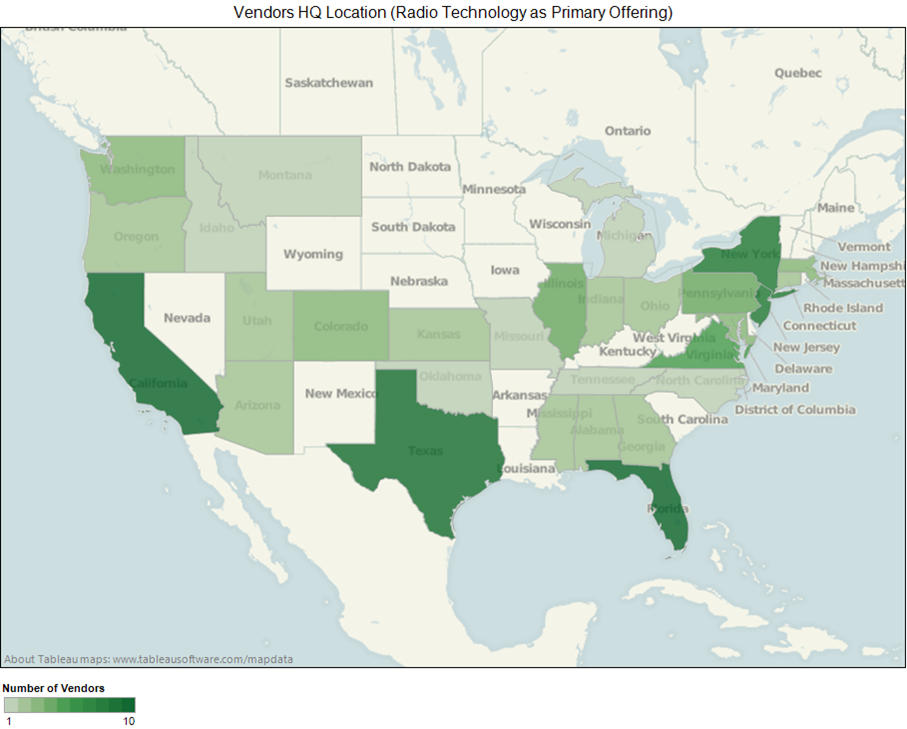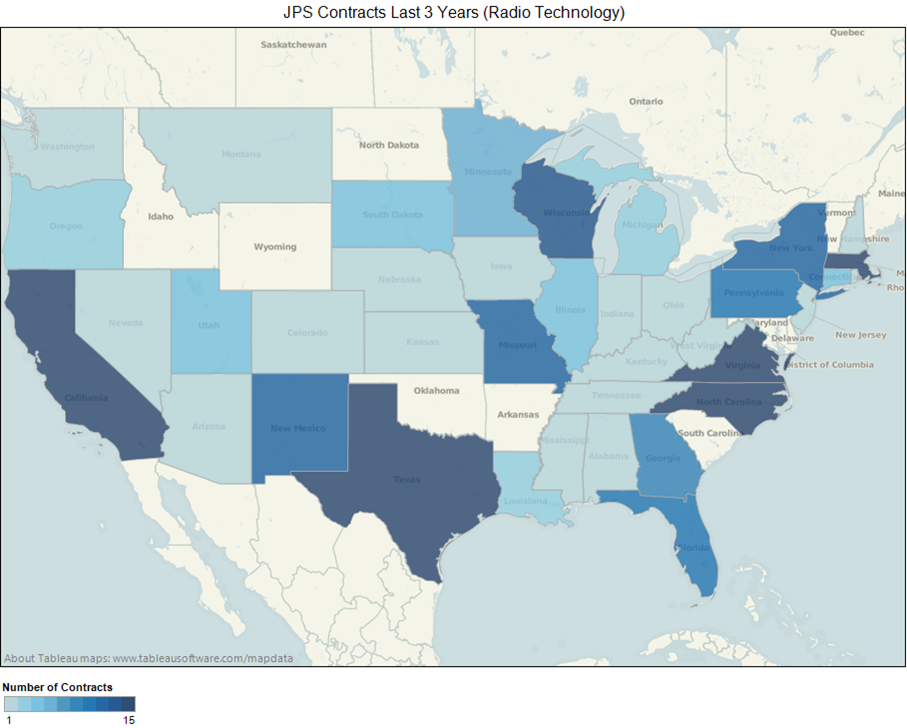The impact of vendor location on procurement
Published: February 01, 2013
Contract AwardsJustice/Public Safety & Homeland Security
It is well known which states have the largest populations and which have the most money. While this access to funds, either through grants or tax revenue, does not always correlate with the number of solicitations released and the number of contracts awarded, in the case of justice and public safety technology, it often does.
The below map details the number of requests for proposals (RFPs) released in the last year, and the number of contracts awarded in the last three years for the following technologies: 911, access control, radio, analytics and surveillance systems, according to the Deltek database. The map also captures a less commonly reviewed aspect of purchasing: the locations of vendor headquarters, which are displayed in green circles.

While this map does not provide information on whether the contracts awarded in each state were awarded specifically to local vendors, it provides a unique look at where vendors are located and where money is being spent. The trend of vendors located in areas that release a high number of solicitations holds true not only across all of the technologies, but also when broken down by individual technology. The below map indicates the locations of vendors specializing in radio technology.

This map strongly correlates with the below map indicating where contracts have been signed in the last three years for radio technologies.

Two of the three states with the most vendors, Texas and California, also awarded the most contracts. Interestingly, only two states with a large number of vendor headquarters made CNBC’s list of the top states for business in 2012. Both Texas and Virginia made the list (numbers one and three, respectively). California, where a large number of vendors exist across all JPS technologies, is 40 on the list, which strongly indicates that business climate is not the only factor in where vendors choose to locate.
Analyst’s Take
As displayed in the first map, states with fewer RFPs released and fewer contracts awarded also have fewer vendors. While the reason for this may vary from state to state, a major factor is the standard terms and conditions of many communities that have location and other preferences, such as small and minority-owned businesses. This type of preferential treatment has driven some major vendors to create smaller satellite offices in many different states so they can take advantage of more opportunities. Vendors who may not be in a position to open additional offices should consider partnering and teaming options as a way of expanding their network and ensuring local eligibility.
GovWin IQ subscribers can read further about these projects in the provided links. Non-subscribers can gain access with a GovWin IQ free trial.